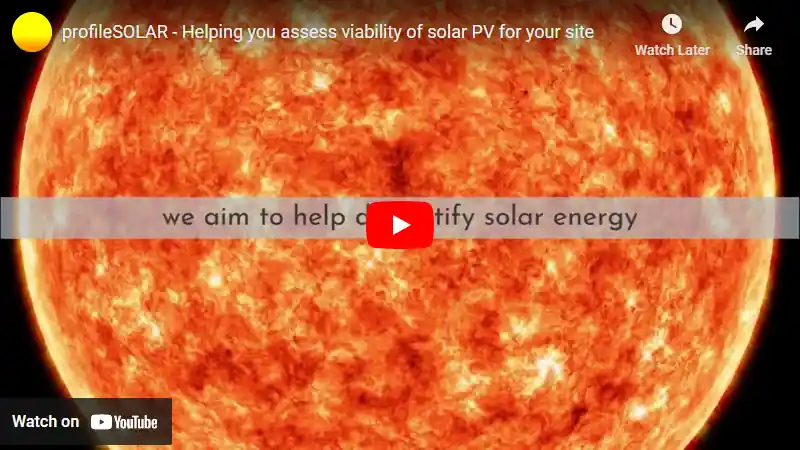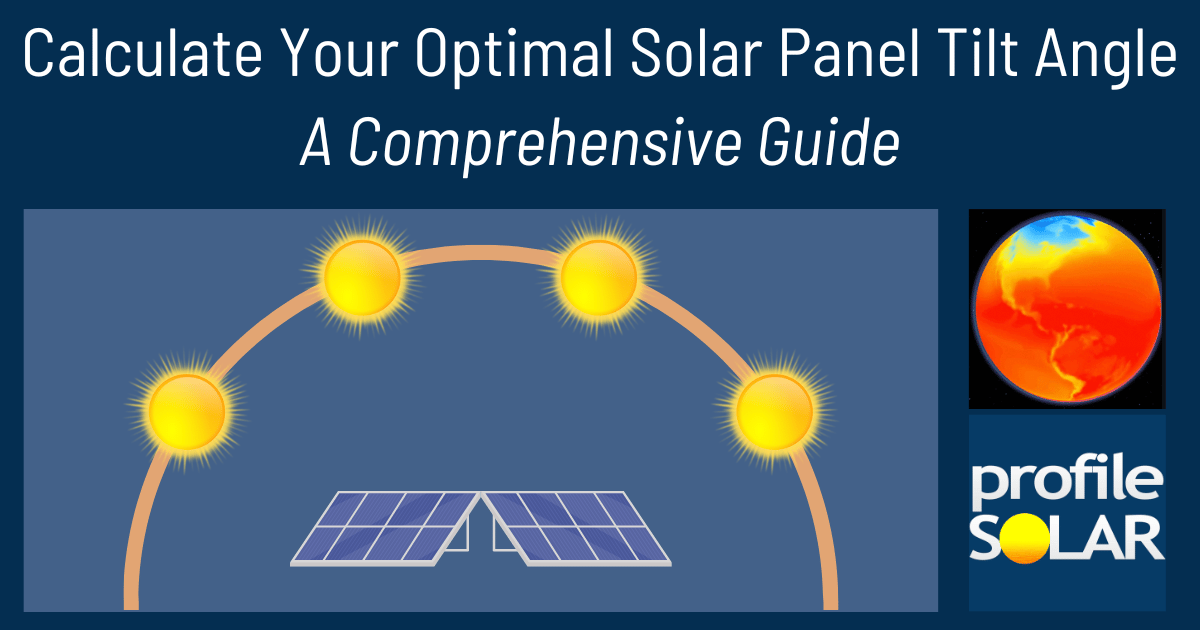

The location in Portland, Maine, USA, is moderately suitable for generating energy year-round using solar PV. The amount of electricity produced from the sun varies throughout the year. During summer and spring, you can expect a good output of around 5.79kWh/day and 5.37kWh/day respectively per kW of installed solar. However, during autumn and winter the output decreases to 3.30kWh/day and 1.96kWh/day respectively per kW due to shorter daylight hours and lower sun position.
Therefore, the best times to generate solar power at this location are during spring and summer when sunlight is abundant. To maximize total yearly production from solar PV at this location, panels should be fixed at an angle tilted towards south by 38 degrees.
There may be some local factors that could affect solar production in Portland such as weather conditions or physical landscape features that could block sunlight reaching your panels (like tall trees or buildings). For instance:
1) Weather: Portland experiences significant seasonal variation with a relatively wet climate which might reduce exposure to sunlight especially during winter months.
2) Topography: Depending on where you live in Portland there may be hills or other structures that could cast shadows on your panel reducing its efficiency.
To overcome these challenges:
1) Install panels in open areas with minimal shade throughout the day.
2) Use weather-resistant panel materials that can withstand heavy rain or snowfall.
3) Regularly clean your panels to remove any dust or debris that might accumulate over time affecting their performance.
4) If possible consider adjusting panel orientation seasonally for optimal exposure to sunlight.
In summary while it's not ideal all year round due to seasonal variations in sunshine duration and intensity; with proper planning & installation techniques one can still harness substantial amounts of energy from solar PV systems installed at this location particularly during spring & summer months when sunshine availability is maximum.
Note: The Northern Temperate Zone extends from 35° latitude North up to 66.5° latitude.
So far, we have conducted calculations to evaluate the solar photovoltaic (PV) potential in 3042 locations across the United States. This analysis provides insights into each city/location's potential for harnessing solar energy through PV installations.
Link: Solar PV potential in the United States by location
Solar output per kW of installed solar PV by season in Portland, Maine
Seasonal solar PV output for Latitude: 43.734, Longitude: -70.2625 (Portland, Maine, United States), based on our analysis of 8760 hourly intervals of solar and meteorological data (one whole year) retrieved for that set of coordinates/location from NASA POWER (The Prediction of Worldwide Energy Resources) API:




Ideally tilt fixed solar panels 38° South in Portland, Maine, United States
To maximize your solar PV system's energy output in Portland, Maine, United States (Lat/Long 43.734, -70.2625) throughout the year, you should tilt your panels at an angle of 38° South for fixed panel installations.
As the Earth revolves around the Sun each year, the maximum angle of elevation of the Sun varies by +/- 23.45 degrees from its equinox elevation angle for a particular latitude. Finding the exact optimal angle to maximise solar PV production throughout the year can be challenging, but with careful consideration of historical solar energy and meteorological data for a certain location, it can be done precisely.
We use our own calculation, which incorporates NASA solar and meteorological data for the exact Lat/Long coordinates, to determine the ideal tilt angle of a solar panel that will yield maximum annual solar output. We calculate the optimal angle for each day of the year, taking into account its contribution to the yearly total PV potential at that specific location.

Seasonally adjusted solar panel tilt angles for Portland, Maine, United States
If you can adjust the tilt angle of your solar PV panels, please refer to the seasonal tilt angles below for optimal solar energy production in Portland, Maine, United States. As mentioned earlier, for fixed-panel solar PV installations, it is optimal to maintain a 38° South tilt angle throughout the year.
| Overall Best Summer Angle | Overall Best Autumn Angle | Overall Best Winter Angle | Overall Best Spring Angle |
|---|---|---|---|
| 27° South in Summer | 48° South in Autumn | 58° South in Winter | 36° South in Spring |
Our recommendations take into account more than just latitude and Earth's position in its elliptical orbit around the Sun. We also incorporate historical solar and meteorological data from NASA's Prediction of Worldwide Energy Resources (POWER) API to assign a weight to each ideal angle for each day based on its historical contribution to overall solar PV potential during a specific season.
This approach allows us to provide much more accurate recommendations than relying solely on latitude, as it considers unique weather conditions in different locations sharing the same latitude worldwide.
Calculate solar panel row spacing in Portland, Maine, United States
We've added a feature to calculate minimum solar panel row spacing by location. Enter your panel size and orientation below to get the minimum spacing in Portland, Maine, United States.
Our calculation method
- Solar Position:
We determine the Sun's position on the Winter solstice using the location's latitude and solar declination. - Shadow Projection:
We calculate the shadow length cast by panels using trigonometry, considering panel tilt and the Sun's elevation angle. - Minimum Spacing:
We add the shadow length to the horizontal space occupied by tilted panels.
This approach ensures maximum space efficiency while avoiding shading during critical times, as the Winter solstice represents the worst-case scenario for shadow length.
Topography for solar PV around Portland, Maine, United States
Portland, located in the state of Maine, United States, is characterized by a coastal lowland topography. The area around Portland is relatively flat with some gentle hills and valleys. It's surrounded by forests to the north and west, the Atlantic Ocean to the east, and Casco Bay to the south. The region has a mix of developed urban areas and undeveloped natural landscapes.
Given this topography and considering factors that influence solar PV suitability such as sunlight exposure (solar irradiance), temperature, land use restrictions etc., large scale solar PV installations would be best suited for:
1. Open or cleared flat lands: These could include agricultural lands or other open spaces that get ample sunlight throughout the year.
2. Rooftops in urban areas: Large commercial buildings or warehouses in Portland can utilize their rooftops for installing solar panels.
3. Brownfield sites: These are previously developed sites that are not currently in use; they can be repurposed for renewable energy projects like solar farms.
4. Near existing infrastructure: Areas close to power lines or substations would reduce transmission costs and complexities.
However, it's important to note that while Maine gets less sun than states further south, modern PV systems can still generate significant power even under partial sun conditions - making largescale solar PV a viable option in this region.
Before proceeding with any large-scale project though, it would be necessary to conduct an on-site assessment considering all environmental impacts (like local flora & fauna) along with local regulations & permissions needed.
Also remember that while Maine's climate isn't as sunny as some regions more known for their solar industries (like California), there have been successful large-scale installations in similar climates – proving it is certainly possible if done correctly.
United States solar PV Stats as a country
United States ranks 2nd in the world for cumulative solar PV capacity, with 95,209 total MW's of solar PV installed. This means that 3.40% of United States's total energy as a country comes from solar PV (that's 26th in the world). Each year United States is generating 289 Watts from solar PV per capita (United States ranks 15th in the world for solar PV Watts generated per capita). [source]
Are there incentives for businesses to install solar in United States?
Yes, there are several incentives for businesses wanting to install solar energy in the United States. These include federal tax credits, state and local rebates, net metering policies, and renewable energy certificates (RECs). Additionally, many states have enacted legislation that requires utilities to purchase a certain amount of electricity from renewable sources such as solar.
Do you have more up to date information than this on incentives towards solar PV projects in United States? Please reach out to us and help us keep this information current. Thanks!
Citation Guide
Article Details for Citation
Author: Aaron Robinson
Publisher: profileSOLAR.com
First Published: Thursday 4th of January 2024
Last Updated: Monday 18th of March 2024
Tell Us About Your Work
We love seeing how our research helps others! If you've cited this article in your work, we'd be delighted to hear about it. Drop us a line via our Contact Us page or on X, to share where you've used our information - we may feature a link to your work on our site. This helps create a network of valuable resources for others in the solar energy community and helps us understand how our research is contributing to the field. Plus, we occasionally highlight exceptional works that reference our research on our social media channels.
Feeling generous?

Share this with your friends!


Compare this location to others worldwide for solar PV potential
The solar PV analyses available on our website, including this one, are offered as a free service to the global community. Our aim is to provide education and aid informed decision-making regarding solar PV installations.
However, please note that these analyses are general guidance and may not meet specific project requirements. For in-depth, tailored forecasts and analysis crucial for feasibility studies or when pursuing maximum ROI from your solar projects, feel free to contact us; we offer comprehensive consulting services expressly for this purpose.
Helping you assess viability of solar PV for your site
Calculate Your Optimal Solar Panel Tilt Angle: A Comprehensive Guide
Enhance your solar panel's performance with our in-depth guide. Determine the best tilt angle using hard data, debunk common misunderstandings, and gain insight into how your specific location affects solar energy production.






